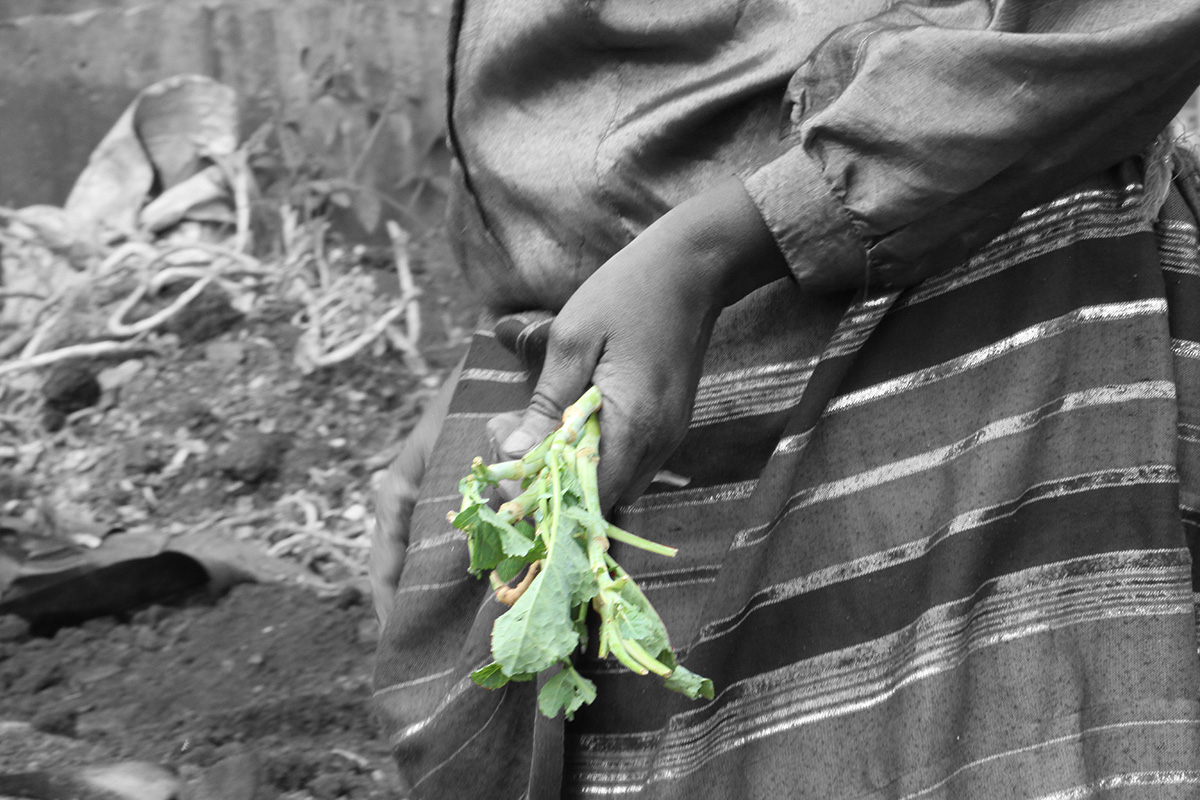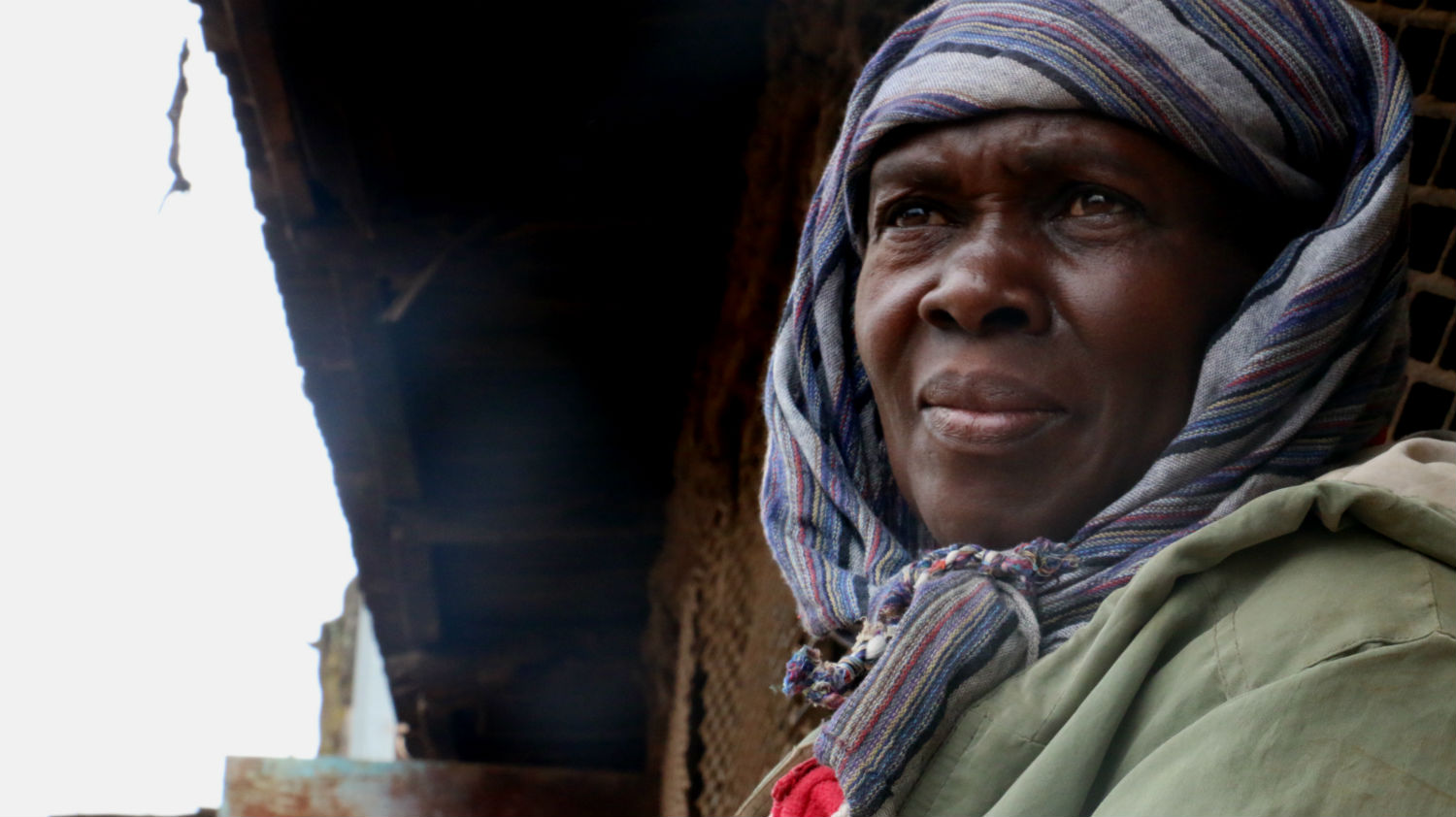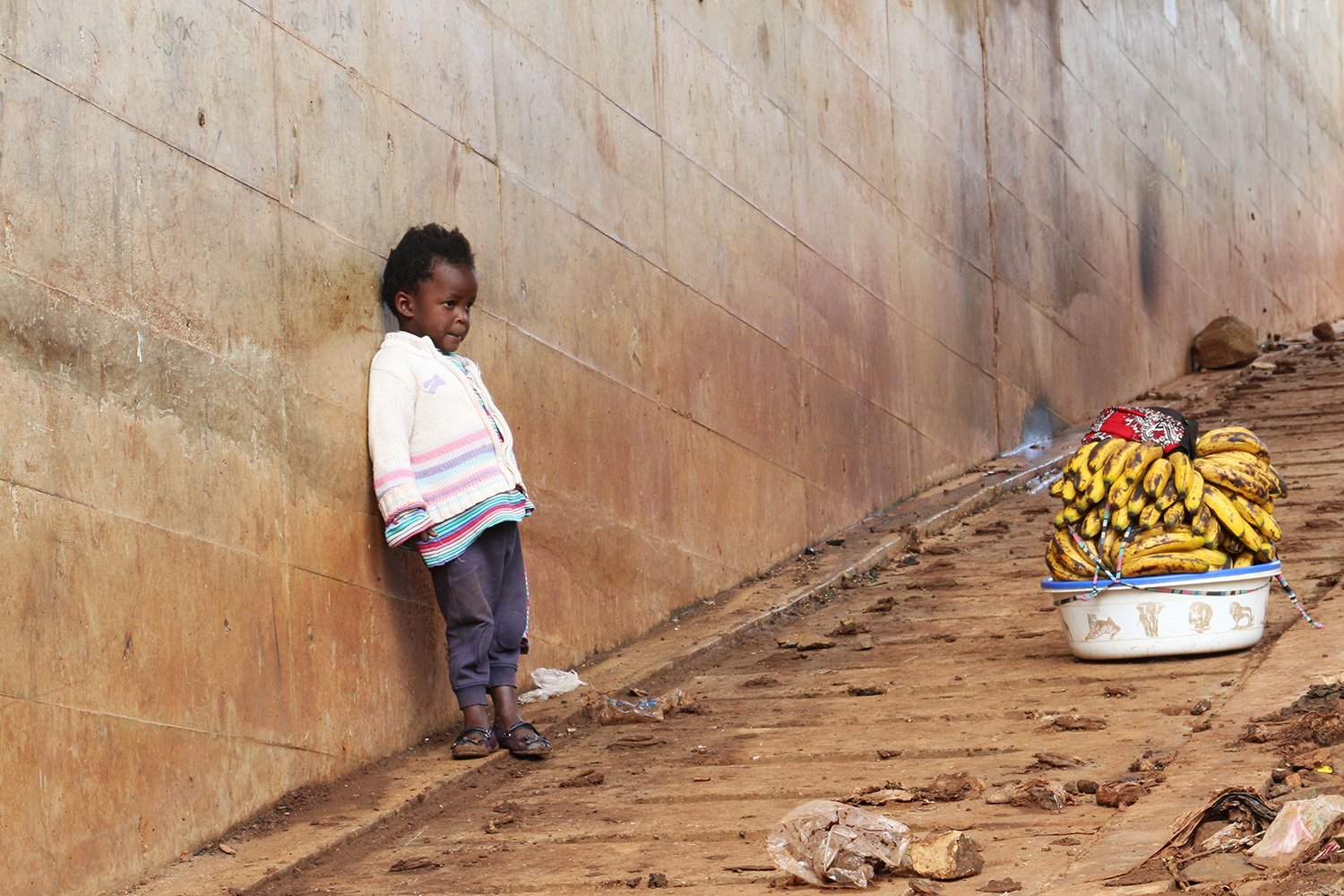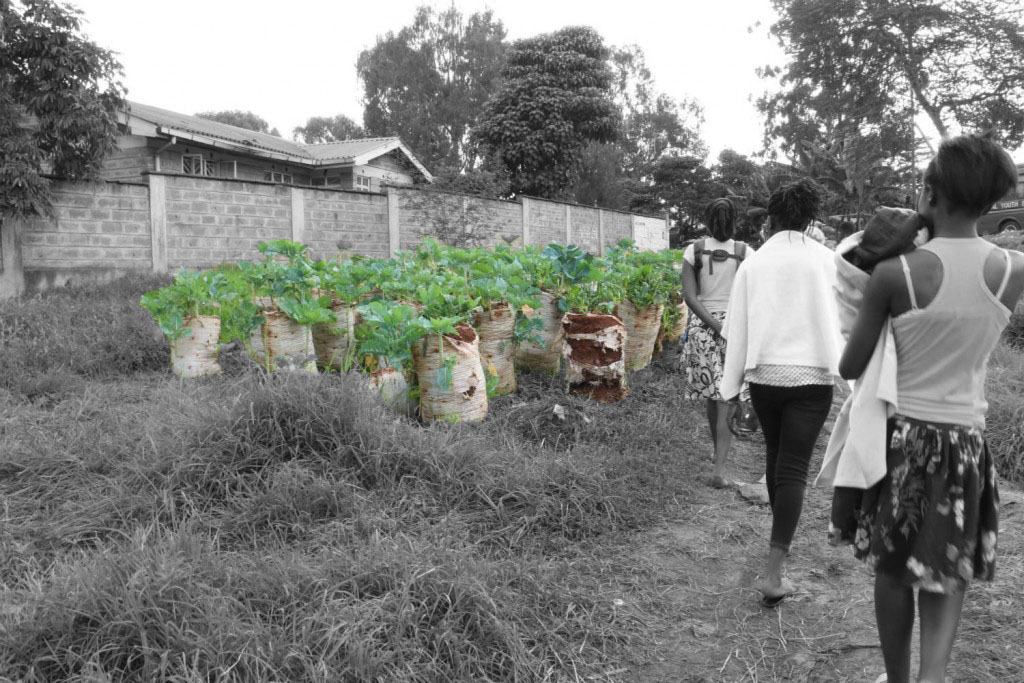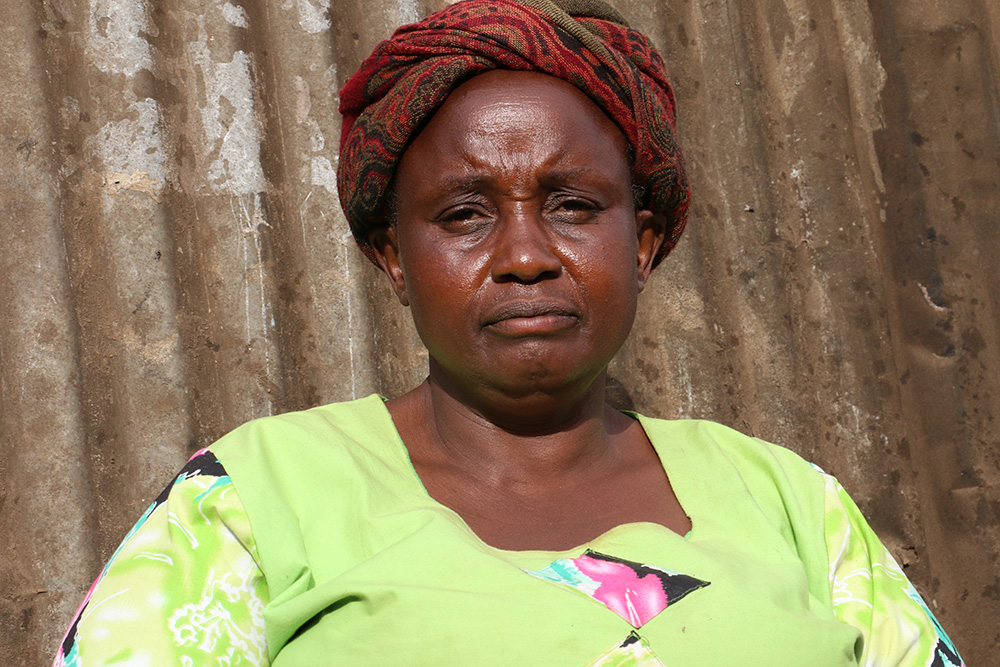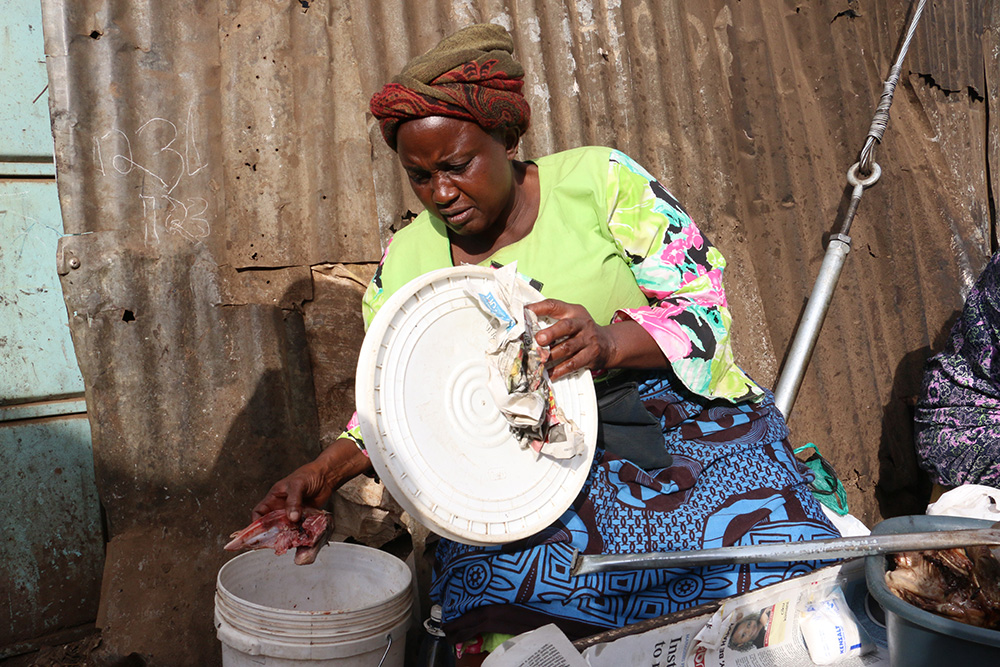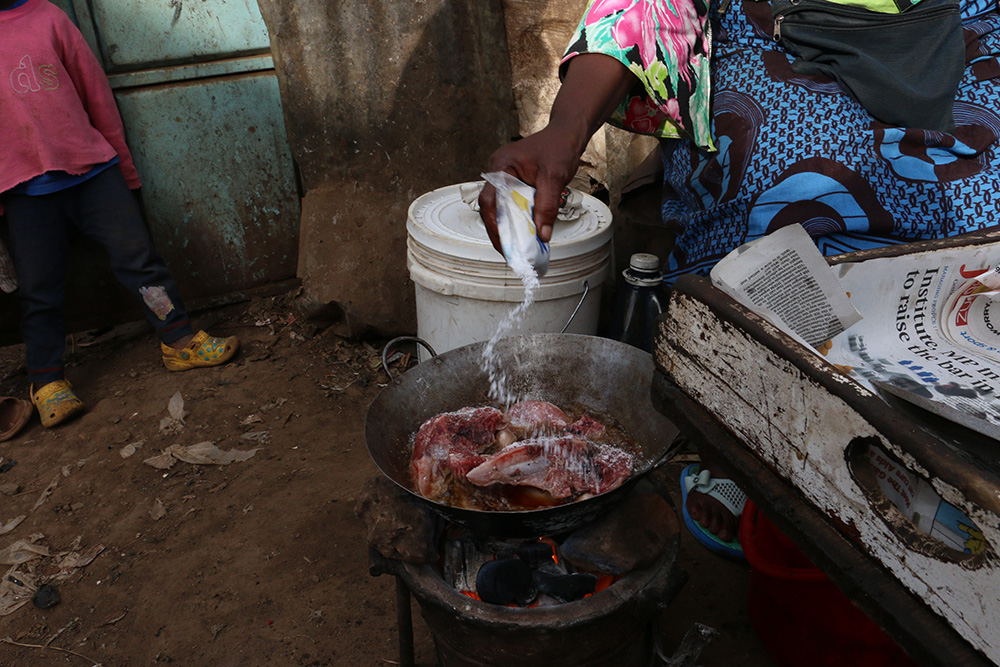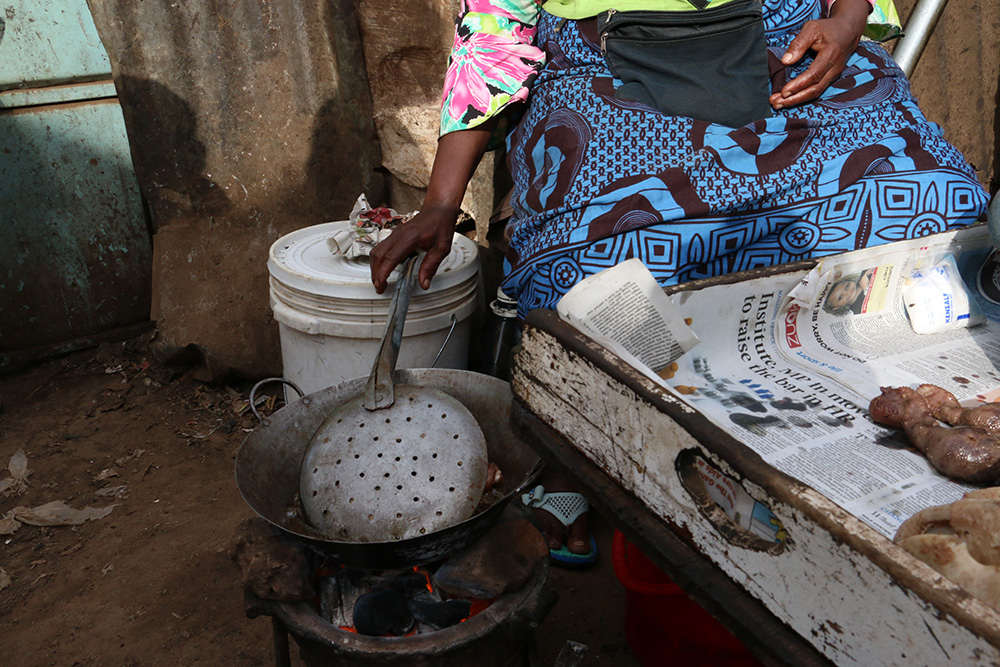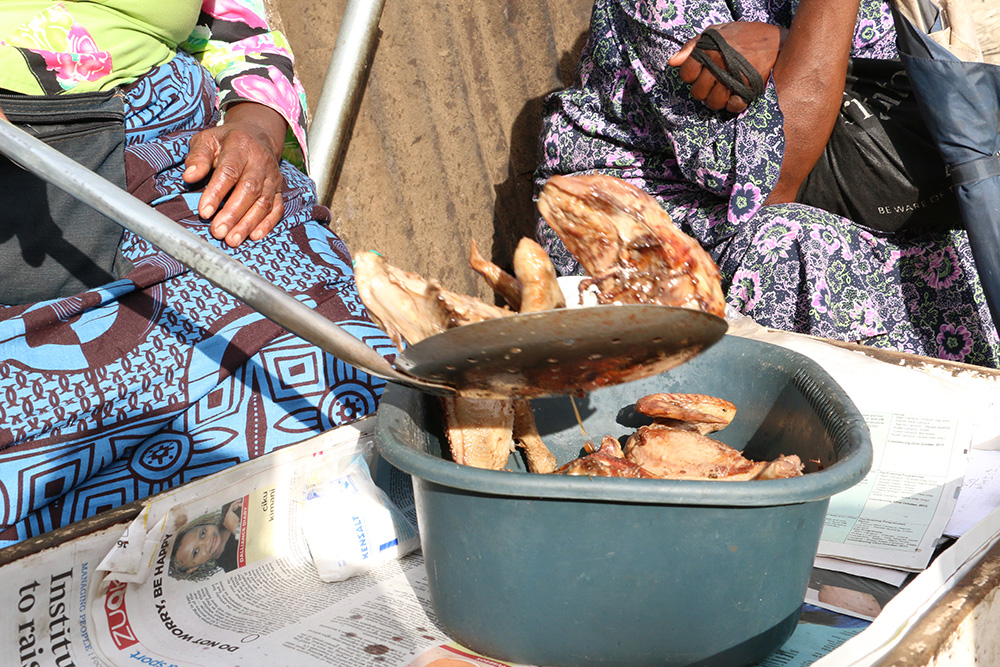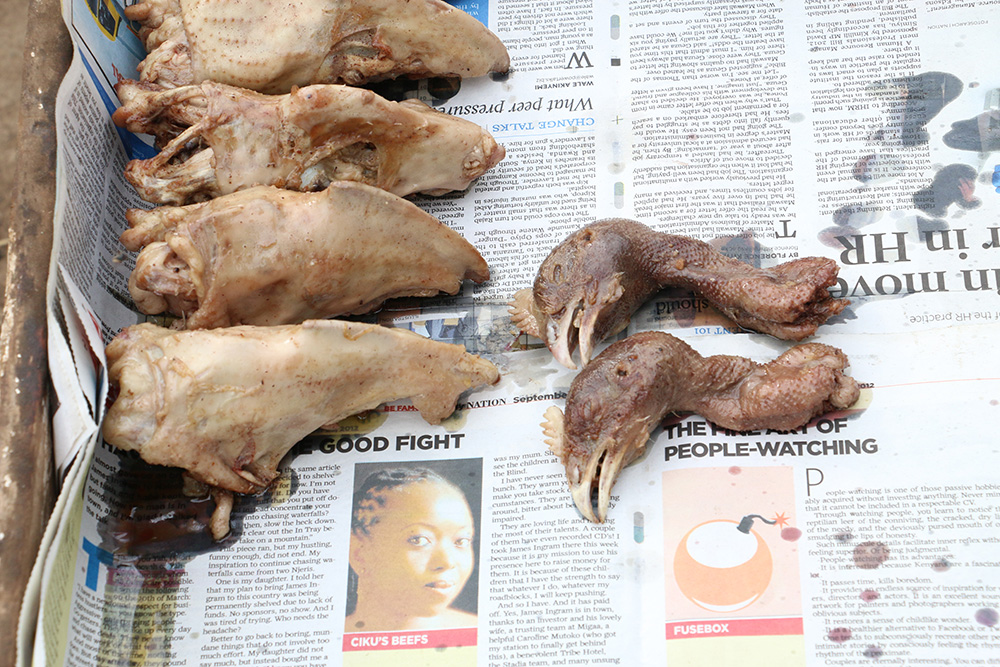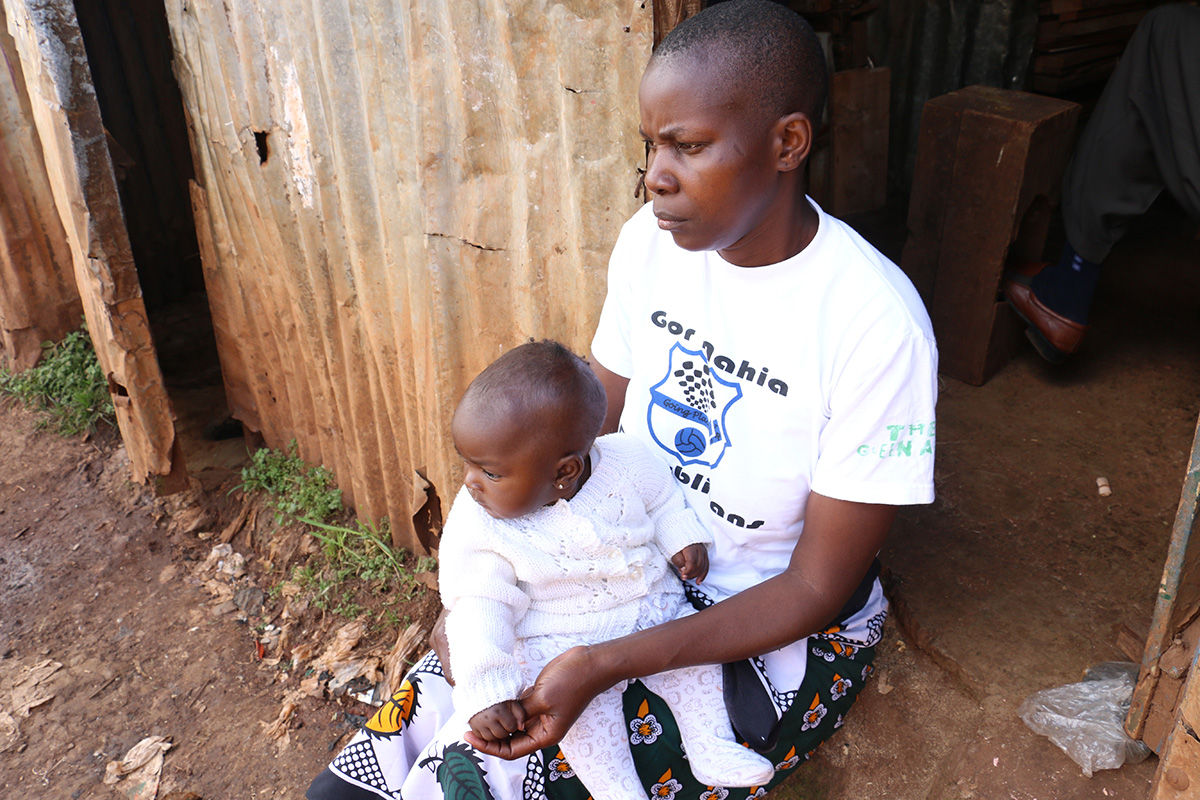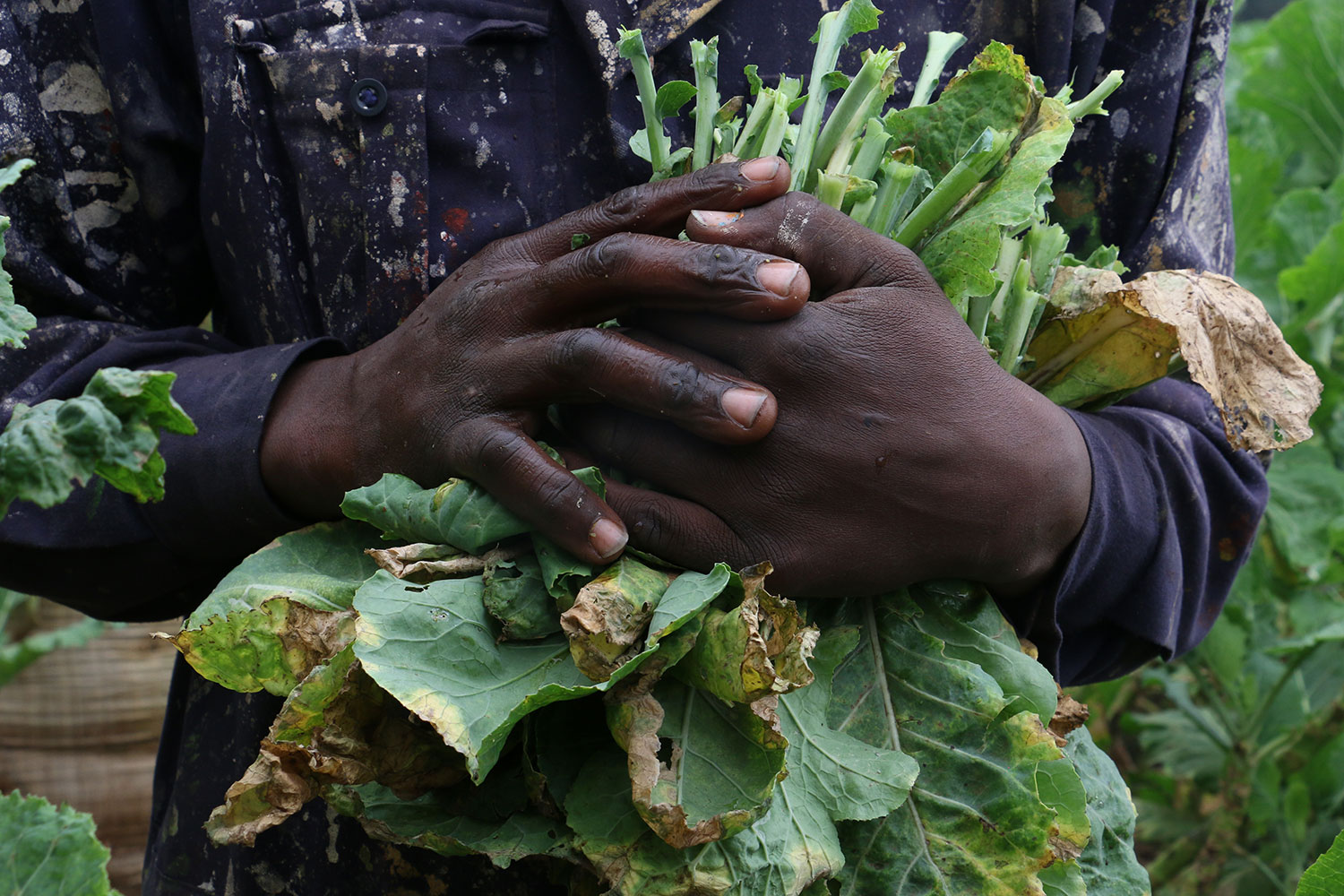
Urban agriculture reform
Urban agriculture has been a growing trend around the world. Kibera is no exception.
“There are over 10,000 sacks in Kibera,” says Lucy Mbrgua, the Kibera agricultural ward officer for Kenya’s Ministry of Agriculture. She’s seen the growth of urban agriculture in Kibera over her six years working in Kibera.
“When I came here, I had not discovered the farms, now we have over 100 big plots,” she says. The bigger plots are like those of Al-Hadid, or Junction Self-Help Group. The smaller plots are like Maggie’s or Judy’s.
While urban agriculture appears to be expanding, these kinds of farms have actually been around for a long time.
While urban agriculture appears to be expanding, these kinds of farms have actually been around for a long time.
What is new are the recent and ongoing attempts to reform and regulate this sector. In part, these reforms are seen as a way to change regulations that have been in place since colonial times. Some agriculture and political experts say the changes were prompted by the reality that this informal activity is an enduring and important source of sustenance. Area regulators also have their eye on a sector that they may finally be able to exert some control over.
Urban agriculture has continued to exist in Nairobi despite its illegal status because the city simply doesn’t have the staff to enforce the laws across the board and because it has helped the city’s most poor access cheaper food, just as informal settlements have helped the city’s poor access housing. Diana Lee-Smith estimates that nearly 29 per cent of households in Nairobi already engage in agriculture within the city limits despite the old law banning the practice she says in Cities Feeding People, a book published by Canada’s International Development Research Centre.
Urban farmers who have been farming illegally within Nairobi’s city limits have been pushing for a change in the law.
“The urban farmers of Nairobi have been driving forward amendments to the law banning urban agriculture, and the members of county assembly have been supportive,” says Kevin Uduny, an urban farmer and activist in Nairobi.
“Urban agriculture is on very murky ground,” said Lee-Smith prior to the passage of the new law. “There needs to be political action.”
And indeed there was. Nairobi changed its official urban agriculture policy with the passage of The Nairobi City County Urban Agriculture Promotion and Regulation Bill, 2015 on July 30, 2015. Instead of banning urban agriculture, as was official policy before this summer, it’s embracing it.
Since July the bill has been enacted into law.
Now, instead of the city’s complacency and resistance towards urban agriculture, they will promote and regulate it. The county government is recognizing the potential urban agriculture has to provide solutions to food security for its urban poor and be used as a tool for women’s and youth’s empowerment says Kibera Member of County Assembly, Babu.
People need to eat, and the experience in urban Kenyan cities demonstrates that residents will find a way to grow crops they know to improve their food security.
Under old laws, urban farmers were more insecure about their land, and investment in livestock. Since urban agriculture was technically illegal in the city, if a neighbour complained about someone’s activities, a city officer could come and have the farm forcibly removed—no questions asked, says Bill Lijoh the agricultural sector support program coordinator for Kenya’s Ministry of Agriculture.
Now, the city has changed its tune thanks to the new urban agriculture law which seeks to promote and regulate farming.
Investment has started to flow into urban agriculture projects in Nairobi. The Nairobi City County Governor, Evans Kidero recently announced a 2-million CAD investment into youth-run urban agriculture projects within the city.
“I…urged the youth to continue engaging in more activities that promote and ensure sustainable development of urban agriculture for food security attainment,” he said in a Nairobi City County Facebook post announcing the investment announcement on Mar. 17, 2016.
The investments are in direct response to the new urban agriculture promotion law.

Evans Kidero visits Nairobi green house to make urban agriculture investment announcement. [Photo © Evelyn Harford]
The law aims to “encourage urban agriculture as an activity conducive to food security and well-being of the population, [the] creation of work and economic opportunities and for environmental sustainability of the county.”
The specific regulations are not encapsulated within the new law. Instead, it provides overarching guidelines that new bylaws will be based on.
“The regulation we’re going to put in place will favour the farmer and the resident,” says Nairobi City County Member of County Assembly, Babu. “You also have to give the numbers of certain cows and chickens you can have in your place.”
Babu helped to create and push the urban agriculture bill through the assembly as vice-chairperson for agriculture, environment and natural resources for Nairobi.
“You should not bring 1000 cattle in Nairobi, so that you’re able to manage problems,” he says. “You can’t wake up in the night and start working. These are the regulations we’re going to put in place.” As the specific regulations haven’t been put in place yet, Babu expresses caution to those who might test the yet-to-be-written bylaws.
“If people don’t comply, people will be fined. You will have to pay fines if you go break the urban agriculture bylaws,” he says. “If you make a mistake, you’re going to be charged. If you make another problem, your farm is going to be closed.”
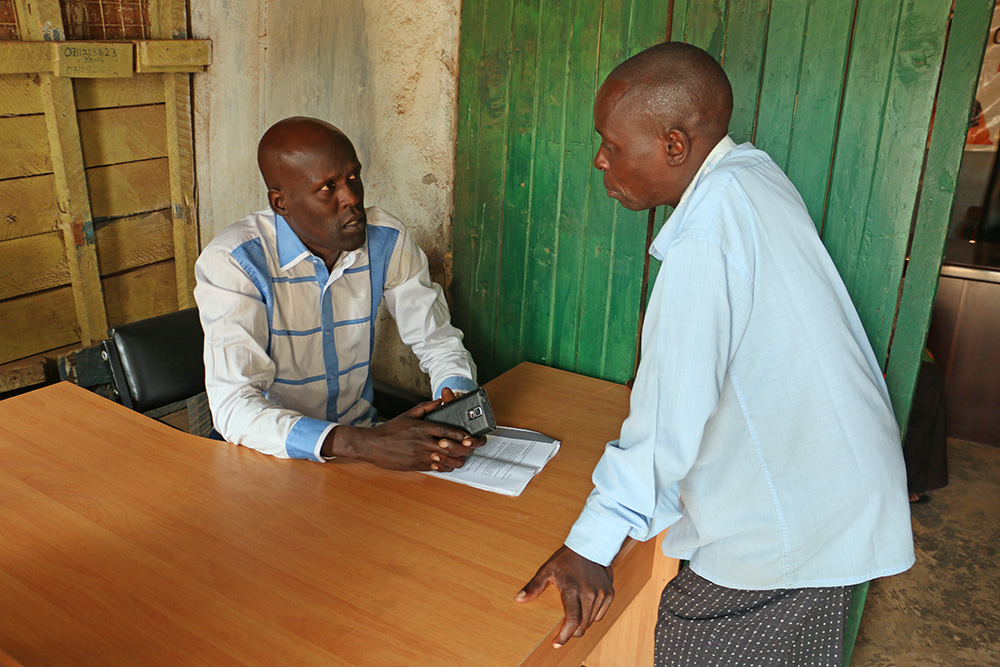
Babu talks to one of his constituents at his Makina ward office. [Photo © Evelyn Harford]
The new legislation aims to provide more guidelines for farming livestock close to public water supplies which could pose a public health risk. It also makes clear that urban agriculture will be encouraged by government. Farmers are encouraged to register with the county and form groups since most available funding will be given to collectives, says to Lijoh the agricultural sector support program coordinator for the Kenyan government.
The total amount of money to be invested isn’t known, but officials like Lijoh and Babu say the money will come. Kenya’s Ministry of Agriculture is planning to invest more into urban farming activities for the city’s most vulnerable populations: women and youth says Lijoh.
“Nairobi is an example for the rest of the world,” Lee-Smith said in a short speech to a small graduating class of urban farmers at the Mazingira Institute.
The political action Lee-Smith has called for is happening; albeit slowly.
The law, while well intended, doesn’t have a strong “official” urban plan to incorporate and carve out investments for women specifically. The recent investment by Nairobi city county has shown a bias towards youth-led urban agriculture programs and not targeted at female-led programs.
“We are not going for the women alone,” said Babu. “We will try to sensitize youth and women. The more we try to sensitize the youth, we also sensitize the women.”
Gender equality has been enshrined within the 2013 Kenyan constitution but is not evident in the new urban agriculture law. Investment for women is not explicitly outlined, a concern for academics like Diana Lee-Smith who has focused much of her research on the gender dynamics within urban agriculture.
“I’m trying to get writing in the law that land allocation for urban agriculture should be to the poor and women-headed households. That should be the rule for the city and for other urban centres,” she says. “If there is land given for urban agriculture, that’s who the land should be given to.”
“Although urban agriculture is not a panacea to solve all urban agriculture problems, it is an important contribution,” says Lee-Smith.
Now, with urban agriculture being officially promoted in Nairobi an important dialogue has now been opened between officials and farmers. Official channels of communication had been closed because of urban agriculture’s illegal status.
“For a farmer to be able to call someone in a senior government position, that’s a big change,” says Lee-Smith.
Additionally, those in power within Nairobi see the openness as a step forward. This new law will help turn urban farming into a viable career path for most constituents in Kibera’s Makina ward so that they may improve their food security and increase their incomes. “I have seen my community benefit from the urban farming,” says Baby “They rear chickens and rabbits. At the moment, you can find small places with sacuma wiki (kale), at least they are, you know, they are trying to improve their food supply in this area.”
Photo Gallery: Woman sells chicken by the side of the road in Kibera . [Photo © Evelyn Harford]
“[Urban farming] has increased the supply of food, in the small local markets. We have increased the food in this area. The percentage is low, but at least it is slowly increasing,” he says.
Many constituents in the Makina ward, such as, Naimo, Ali and Zainab Mohammed are already practicing. Now, they can go to their local member of county assembly to request funds and to raise the profile of their agricultural-based organizations as an occupation to which both youth and women can.
East Africans often view agriculture as a punishment, or low-brow career. Many look down upon it when seeking scarce white collar, business or government jobs in urban centres like Nairobi.
“In a family you’re told a white collar job is the best job. In fact agriculture, so we get an opportunity, they get a white collar job,” says Babu. “Sometimes it’s very hard to get those people to do agriculture.”
Babu, and others within the government, want to break down those barriers.
“In this bill we’re trying to say that we encourage the urban farmers,” he says.
Despite the lack of official encouragement before the passing of the law, the practice of urban farming, by sheer necessity, had already taken root. Now, county officials’ hope the new law and guidelines will encourage more urban agriculture in Nairobi in a safe and healthy way.
One major area of concern is water sources for crop irrigation. There are major concerns for urban agriculture in densely populated areas like Kibera due to the risk of pollution to water sources from human waste, livestock and fertilizer.
In the urban settlements, much of the streams are contaminated with heavy metals and human waste. Additionally, livestock are reared close to water supplies resulting in animal droppings contaminating the water supplies. The city will encourage education and awareness of water to use for irrigation in the informal settlements. The new law and guidelines will also provide guidance on livestock rearing to decrease the contamination of water supplies through animal droppings from livestock and poorly planned irrigation.
‘There is a health and safety concern when you’re doing agriculture in a small space,” says Babu.
Diana Lee-Smith also raises concerns about the heavy metals contaminating Kibera soil. Heavy metals and pollution are contributed by industry and dumping in the area. Kibera has little in the way of waste management, with many residents simply letting raw sewage run, untreated from their homes and dumping detergents into the streets.
Although the law makes a commitment to public safety to keep animals and fertilizer run off from water sources, there doesn’t seem to be any concrete plan to mitigate these risks in Kibera where water quality problems are already a source of concern. In addition to crop contamination, water-borne illnesses, like typhoid and cholera, are already commonplace in Kibera.
Guidelines and regulations have not been released to date but politicians are in the process of translating the broad set objectives set out by the bill into specific bylaws.
Luc Mougoet, a senior policy specialist with the International Development Research Centre with an over two-decade focus on urban agriculture, suggests that closer consultation between municipal departments in cities who are implementing urban agriculture policies and bylaws. He says this communication is needed both to mitigate the risks and solve problems that have already emerged because of poor water sources and sanitation.
Mougeot points to the city of Vancouver as a key example. Public consultations are held and city departments coordinate to solve crucial issues of municipal land use, public safety and public health. Comparing a city like Vancouver to a city like Nairobi might seem unfair, but it is not an impossible for Nairobi to achieve this level of organizational capabilities.
Nairobi will need greater cooperation among the land, housing and physical planning sectors, public works, road and transport sectors, water, energy, forestry, environment and natural resources sectors to fully and effectively integrate urban agriculture within the city effectively, equitably and safely.
Land Rights
As urbanization continues to ramp up, Nairobi will see its population double to 8 million by 2020. Many will be squeezed into the already packed informal settlements.
One of the biggest barriers people in Kibera face, along with other residents of informal settlements in the global south is land rights and limited physical space.
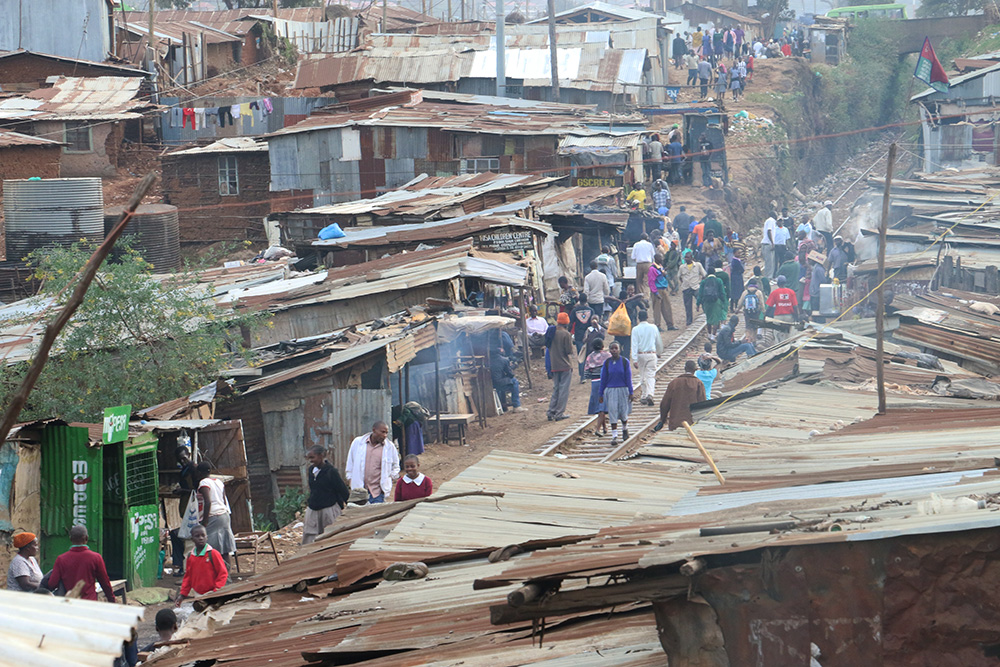
Busy evening commute by the train tracks that run through Kibera. [Photo © Evelyn Harford]
In the eyes of officials and the law, residents of Kibera are viewed as squatters on government land. They can be evicted at any point but, just as Mougeot points out, cities like Nairobi are forced to accept these sprawling informal settlements since there is no market for formal housing and the government says it can’t afford the cost of providing or subsidizing social housing. Developers have their eyes on unused land in the cities, as well as, land where Kibera residents’ currently live. Future development, however, would not cater to the city’s poor. Instead, the construction of new homes and businesses would be directed at Nairobi’s growing middle class, further widening the gaps among the city’s population.
“The developments are coming and also our population is increasing. People are coming more and because of the rural-urban migration,” says Lucy Mbrgua an agricultural ward officer for Kibera. “This place is becoming smaller.”
The new imperative to promote urban agriculture and dedicate lands to this practice might alleviate the fears for personal investment in urban agriculture projects.
The urban agriculture act, yet to be released, will aim to protect the land rights of those who want to engage in urban agriculture in informal settlements like Kibera.
The new urban agriculture reform promises to, “…regulate access to land and water for use in urban agriculture within the county, giving priority to residents of high density and informal settlements.”
In theory, a long-term lease and sanctioned access could provide farmers with much needed security to develop urban farms.
“The development has been growing in Nairobi very fast and part of building, people want to make their own things, their individual things so, the space in Nairobi is also scarce for agriculture, says Babu. “So we’re trying to see if we can secure some land in Nairobi in future to encourage most of the farmers.”
As with many other parts of the new law there are still few specifics about how the changes in regulations and laws will be implemented.
Many of Kibera’s residents are evicted when development is planned by the city and the national government. In July 2015, around the same time the new urban agriculture law was being passed, hundreds of families were evicted from their home to make way for a new paved road.
Perhaps the county government’s new commitment will pave the way for more respect for land rights and trump development objectives looking to tear down parts of Kibera. However, it should be stated that both the county government and the national government are highly corrupt. Many officials line their pockets with money doled out through development contracts.
For all that is promised within the urban agriculture bill, it will be up to the farmers on the ground and researchers to fight for lands to farm on.
Urban agriculture will have to be protected by politicians with a strong humanitarian imperative for their citizens, as well as, a commitment for which the citizens must hold their government accountable.
Training & Education
Urban farmers in Kibera will need education and training to make their plots productive, sustainable and safe. The Bill promises that the county government will, “promote training and capacity building of farmers in various areas including sustainable commercial livestock farming, animal health, disease and pest management practices, biogas, and organic compost and manure production, sustainable, appropriate production of crops, vegetables, fruit, agro forestry, and mushrooms and appropriate fish farming and breeding.”
Without investment in long-term education for farmers the path ahead will be rocky. But people on the ground say any future education and training brought about by the new legislation must be geared to individual urban environments.
The farmers I spoke with in Kibera say there have been mistakes in the past with other urban agriculture projects and they hope lessons can be learned from their mistakes.
Although non-profits have tried to make waves by investing in the urban farming movement, they have largely fell short says Yunis Chebichiy, who volunteers with Maggie as a homecare worker at LAPCA.

Maggie and Yunis plant more sack gardens and discuss LAPCA business. [Photo © Evelyn Harford]
Femmes Africa Solidarité (FAS) first came to Kibera in 2008 after the post-election violence. The nongovernmental organization stayed until 2012 promoting sack gardening. Claims made in many peer reviewed academic journals state that FAS was instrumental in getting thousands of Kibera residents into sack gardening. Nearly four years later though, many, including Yunis, feel the organization’s efforts were not as productive as the academics believe.
“Solidarité came, and then after, people stopped gardening,” she says.
FAS came to Kibera and gave those participating food vouchers, fertilizers, pesticides and provided water tanks and sacks to start gardening, says Yunis. But because they didn’t offer long-term education about urban farming, or comprehensive programming to support female empowerment alongside the sack gardening, many have since stopped urban farming.
“Those people who were getting the vouchers were only sack farming for the voucher not for the passion,” says Yunis. “We didn’t get any vouchers, but we still are in the field.”
When their plants get sick, they don’t know what to do, she says. The organization only stayed for a short time.
“You know they were providing everything, says Yunis. “If you don’t know where to find manure … you’ll just stop.”
Farmers who are new to the practice need somewhere to turn for long-term advice and education. Some women’s hubs exist, like that run out of the Mazingira Institute. Other collectives are formed informally and their members work together to invest in their projects and save the earned money.
Lucy Mbrgua, trains and monitors urban farmers in Kibera to keep them on track.

Lucy Mbrgua visits the Junction to check on their progress and offer advice. [Photo © Evelyn Harford]
“They require a lot of training and they require a lot of follow ups because sometimes you train somebody and then after some time they have forgotten, so you have to go back,” she says. “There is an issue of relaxing, so sometimes you come back and they’re not doing the work.”
Urban farmers in Kibera can get discouraged when they invest money and things don’t go according to plan.
“There’s an issue of discouragement,” says Mbrgua, “Especially when you’re first in farming you first get small bits, small bits. You may find I put in a lot of money but I get very little. So, you have to keep them boosted and motivated.”
Face-to-face visits are crucial for farmers to stay positive about their choice to participate in urban agriculture.
“It’s a hard job,” she says. “So you have to find out what are the changes, can we go back or have you given up?”
The major problem here is resources; Mbrgua is part of a small team in the city who actively meets with the urban farmers on the ground. She works with one other woman in Kibera to help train and encourage the farmers.
Many farmers, like Maggie, try to fill this void with peer-to-peer training which is a crucial piece to the under resourced government.
The government says it plans to offer more money for urban farmers in Nairobi as a result of new legislation to come out of the urban agriculture reforms. But, Babu couldn’t offer a number, only stating that “there is money in the budget.”
But, Bill Lijoh from the Ministry of Agriculture did offer some advice.
Farmers are encouraged to register with the county and form groups since most available funding will be given to collectives, says Lijoh.
The passage of the new urban agriculture law is a small step in the right direction for Nairobi, and although the law is not perfectly inclusive or revolutionary, it is a small victory for the urban farmers of this urbanizing African metropolis.
There will be growing pains, and it will be up to citizens, farmers and committed politicians to reach common ground where they may decide the future of urban agriculture in Nairobi and within the city’s informal settlements like Kibera.
Click “The path ahead” to find out where we go from here and how Nairobi’s urban agriculture policy should transform to improve inclusiveness and equity to benefit the city’s most vulnerable citizens, including women who live in Kibera.
